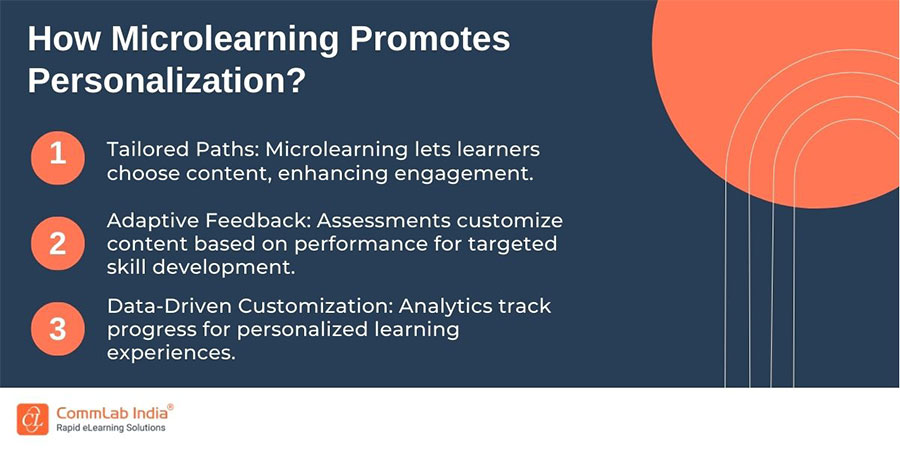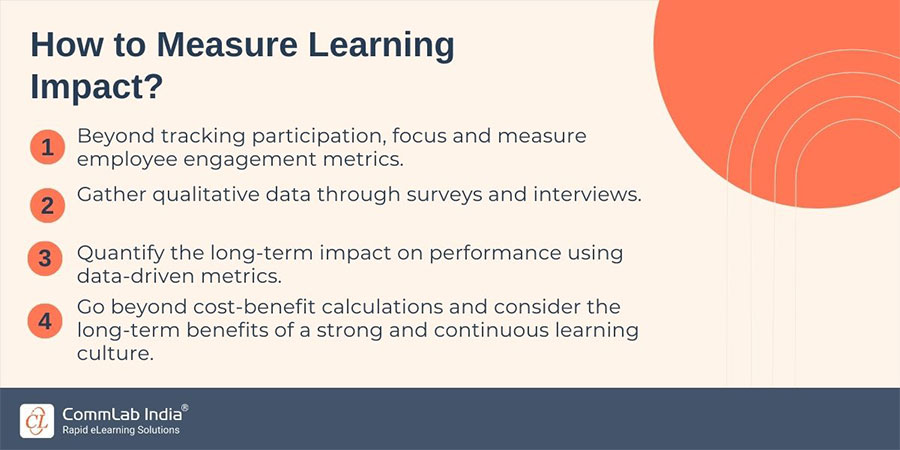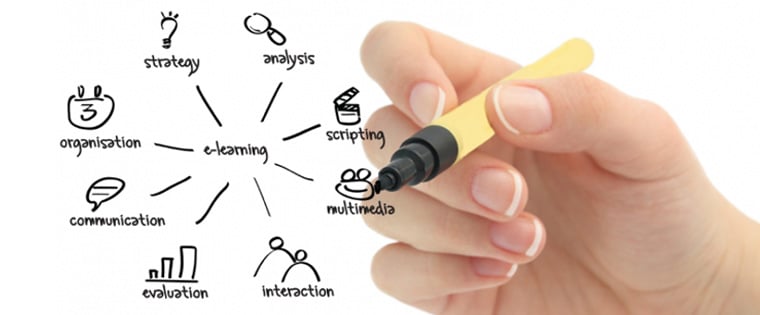How to Build an Innovative Learning Culture? [Insider’s Guide]
![How to Build an Innovative Learning Culture? [Insider’s Guide] How to Build an Innovative Learning Culture? [Insider’s Guide]](https://blog.commlabindia.com/hubfs/blogs/continuous-learning-culture-benefits-tips-corporate.jpg)
In today's ever-evolving business landscape, innovation is no longer a luxury, but a necessity. Companies that nurture a culture of continuous learning and knowledge sharing are better equipped to adapt, thrive, and stay ahead of the curve. But how do you create such a culture within your organization? This blog post dives deep into practical ways you can build a more innovative learning environment, empowering your workforce to become agents of positive change.
Before we dive into practical steps, let's revisit the core concept of a learning culture in a corporate environment.
What is Learning Culture in a Corporate Environment?
Learning culture in a corporate environment is where continuous learning and knowledge sharing is valued and encouraged. It involves employees and the organization actively seeking new skills, collaborating to share knowledge, and applying learnings to improve individual and organizational performance.
Learning culture is characterized by -
- Continuous learning and knowledge sharing: Employees are actively encouraged to seek new skills, share expertise, and collaborate to improve individual and organizational performance.
- Growth mindset: Mistakes are seen as opportunities for learning and development, fostering a risk-taking environment where experimentation is valued.
- Open communication and collaboration: Employees feel comfortable sharing ideas, seeking feedback, and working together to solve problems.
- Support for development: The organization provides resources, opportunities, and encouragement for employees to pursue their learning goals.
How to Build an Innovative Learning Culture in a Corporate Environment?
Now, let's explore practical strategies to cultivate this innovative learning culture:
1. Lead the Charge: Cultivate Innovation through Learning
Executives set the tone: Emphasize learning's value through frequent meetings, town halls, and performance reviews. Share success stories and connect development to individual and company goals.
Celebrate the Journey: Recognize and reward employees who actively pursue learning, even if immediate results aren't evident. Public shout-outs, awards, or bonuses can amplify their efforts and inspire others.
Embrace Experimentation: Foster safe spaces like hackathons, innovation labs, or internal "pitch days" for new ideas. Encourage experimentation without fear of failure, emphasizing the value of learning from mistakes as a stepping stone to innovation.
2. Democratize Learning: Make Knowledge Accessible to All
Cater to diverse needs: Offer a buffet of learning options like online courses, interactive workshops, conferences, and mentorship programs. On-the-job training adds practical context.
Embrace microlearning: Bite-sized modules fit busy schedules, allowing focused knowledge acquisition. Think bite-sized videos, podcasts, or interactive quizzes.
Personalize the journey: Utilize learning management systems (LMS) to recommend courses and resources based on individual roles, skills, and career goals.

3. Foster Collaboration: Build a Knowledge-Sharing Hub
Empower knowledge exchange: Cultivate online communities and forums where employees can share expertise, ask questions, and learn from each other's experiences.
Tap into mentorship magic: Pair experienced employees with newcomers, fostering guidance, support, and knowledge transfer through mentorship and peer coaching programs.
Spark teamwork and learning: Design projects that require collaboration and knowledge sharing to achieve common goals. This empowers teams, fosters innovation, and builds a learning-oriented culture.
4. Measure and Evolve: Quantifying the Learning Impact

Beyond tracking participation, delve deeper into employee engagement. Analyze completion rates, voluntary learning activities, and enthusiasm through surveys and feedback sessions.
Gather qualitative data through surveys and interviews. Understand employee perceptions of program effectiveness, relevance to their roles, and alignment with the innovation culture.
Quantify the impact on performance using data-driven metrics. Track changes in key performance indicators (KPIs) like productivity, problem-solving skills, and innovation output. Compare pre- and post-training performance to assess individual and team improvements.
Go beyond cost-benefit calculations. Consider the long-term benefits of a strong learning culture, including increased employee retention, enhanced problem-solving capabilities, and improved adaptability to market changes.
→ Download Now: Selecting the Right eLearning Vendor [eBook]
5. Keeping the Learning Engine Humming: Continuously Improve Your Culture
Data-Driven Evolution: Analyze data and feedback to identify areas for improvement in your learning programs. Don't just track completion rates, delve into employee engagement, knowledge retention, and impact on performance. Adapt programs based on these insights, ensuring they stay relevant and effective.
Embrace the Future of Learning: Stay ahead of the curve by exploring emerging technologies like VR and AR. Imagine immersive simulations, interactive 3D models, and gamified experiences that revolutionize the learning journey.
Cultivate a Culture of Learning: Foster an ongoing dialogue about learning needs and opportunities. Encourage open communication and feedback loops. Host regular discussions, learning circles, and knowledge-sharing sessions to keep the learning conversation flowing.
What are the Common Challenges Faced When Building a Learning Culture?
Building a thriving learning culture isn't a walk in the park. While the rewards are plentiful, obstacles often lurk around the corner.
Here are some common challenges and ways to overcome them:
1. Leadership Buy-in: From Skeptics to Champions
Leaders might not see the transformative power of a learning culture, leading to lukewarm support and limited resources. The best way to overcome this is by quantifying learnings’ impact on productivity, innovation, and retention. Share employee success stories and lead by example - get them learning too!
2. Competing Priorities: Finding Time for Growth
Busy schedules and demanding workloads can create a tug-of-war between daily tasks and learning, leading to low participation. Utilize microlearning modules that fit busy schedules, like podcasts or interactive quizzes. Encourage knowledge sharing during work hours, promoting learning as part of the workday.
3. Resource Constraints: Building on a Firm Foundation
Insufficient budgets, lack of dedicated learning spaces, and inadequate technology can hinder developing and delivering effective programs. Explore cost-effective solutions like eLearning or open-source resources. Partner with external training providers for specific expertise.
4. Keeping Pace with Change: Embracing the Learning Tech Wave
The rapid evolution of learning technologies necessitates constant adaptation to ensure effective integration. Solve this by embracing experimentation! Partner with eLearning outsourcing vendors, involve employees in choosing new learning tools, and foster a culture of continuous learning.
Does Outsourcing eLearning Benefit Corporate Training? [Watch Video]
5. Catering to Diverse Needs: A Learning Buffet for All
Addressing diverse learning styles, preferences, and accessibility needs can be challenging. Address this using learning analytics to personalize learning! Offer online courses, workshops, hands-on training, and accessibility features for all styles and needs.
6. Sustaining Momentum: Keeping the Learning Flame Alive
Maintaining initial enthusiasm and momentum over time can be difficult. To overcome this, recognize and reward employees who actively participate in learning. Celebrate learning milestones and achievements, and encourage open communication and feedback.
Wrapping Up
Remember - Building a culture of innovation is a journey, not a destination. By implementing these practical steps and fostering a supportive environment, you can empower your workforce to become continuous learners, problem-solvers, and agents of positive change, propelling your organization towards a brighter, more innovative future.
Considering the importance of learning and fostering a continuous learning culture, building an effective eLearning program is crucial. But choosing the right vendor can be daunting!
Download our FREE eBook: Selecting the Right eLearning Vendor and navigate the selection process with confidence.





